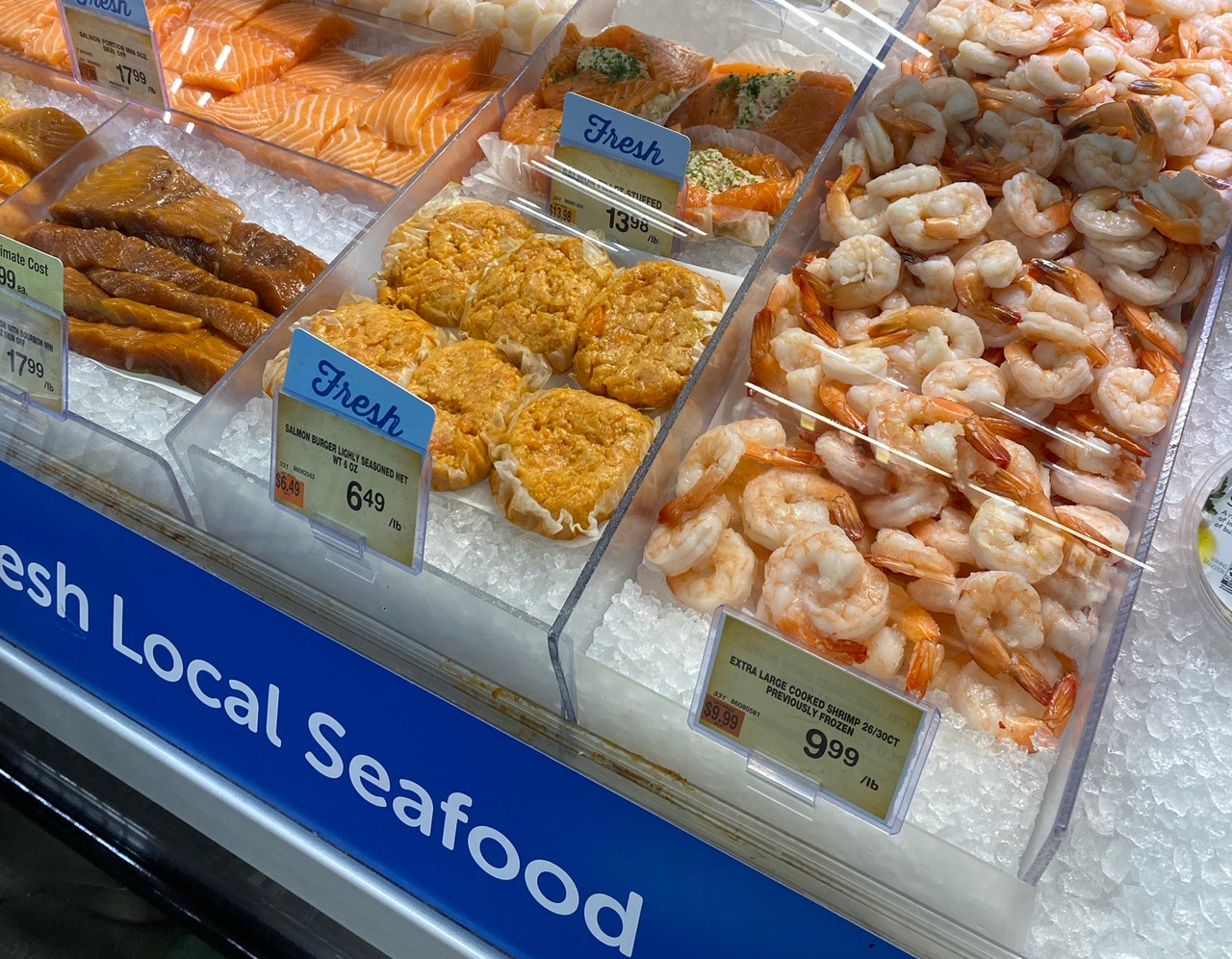Retailers search for the perfect seafood assortmentRetailers search for the perfect seafood assortment
Merchandising the right variety of selections is key for boosting category revenues
November 17, 2021

Complexity is permeating the seafood merchandising landscape.
To maximize sales, retailers face the challenge of offering the optimal products to a diverse shopper audience whose preferences often vary by region, and even store, while dealing with supply chain and pricing issues.
Among regions, for instance, the Northeast and California have above average market share of fresh finfish sales, while the Northeast, Southeast, Mid-South and South Central regions have above average market share of fresh shellfish revenues, according to Information Resources Inc. (IRI), a Chicago-based market research firm.
Indeed, there is much greater seafood adoption in the Northeast than any other area in the U.S., said Anne-Marie Roerink, principal at 210 Analytics LLC, a San Antonio-based market research and marketing strategies firm. “That means higher sales, but also purchasing across a great variety of species, simply because people are not as intimidated by preparing seafood themselves, whether finfish or shellfish,” she said.
Retailers, meanwhile, tend to focus on “entry items” in areas or channels where seafood consumption is below average, Roerink noted, which include species with high household penetration, such as salmon and shrimp.
Offering variety, however, is the key to sales growth, she advised. “Few households will eat salmon or shrimp more than once a week, if that,” Roerink said. “So, it is important to follow the path to other items with high household penetration, such as tilapia or cod. With the value-added offerings and ready-to-cook packaging, seafood has a huge opportunity to expand the reach within existing and new seafood consumers.”
Salmon remains the dominant species in the fresh seafood case with activity on the upswing. October 2021 sales totaled $237 million, up 44.8% from October 2019, reports IRI. Crab is the next strongest revenue generator with October 2021 sales of $84 million, up 37.3%, followed by shrimp with $74 million in sales, an 11.6% increase from 2019, according to IRI.
Other species registering strong growth include lobster, with October 2021 sales of $26 million, a 63% increase from October 2019; smoked salmon, with $9 million in sales, a 29.5% gain; trout, with $9 million in sales, a 16.6% increase; and catfish, with $20 million in revenues and 11.3% growth, IRI reports.
Boosting the seafood IQ
Knowledge and familiarity are the key factors that cause consumers to gravitate to specific types of seafood, Roerink said, noting that the COVID-19 pandemic is contributing to a boost in the average seafood IQ. “Seafood does not lend itself well to takeout or delivery, so people started preparing it at home,” she said.
Consumer interest in convenience, meanwhile, is triggering greater sales of seafood cakes, which includes crab cakes. October revenues were up 20.3% from the year-earlier period, and 59% from 2019, IRI reports. “These items are easy to prepare and require little seafood know-how,” Roerink said.
Consumer interest in convenience is helping to fuel growth of crab cakes and other easy-to-prepare seafood items.
Items for entertaining are becoming more popular as well, with sales of seafood trays and seafood salads up 137% and 30.4%, respectively, from a year earlier. “Retailers have also gotten very creative in ready-to-cook bacon-wrapped scallops, coconut shrimp and other items that are ideal for at-home gatherings,” Roerink said. “With the winter holidays around the corner, this will likely be a big area of growth.”
Yet, despite strong sales gains in many seafood categories, higher prices due to inflation are going to limit purchasing for some shoppers and divert others to cheaper proteins, Roerink said. “There will be some trading out and trading down, but it should be fairly limited given that the typical seafood shopper is higher-income with a little more breathing room in their disposable income,” she said.
In addition, supply chain challenges are making it harder for some retailers to source products, causing a decrease in the average number of items per store, Roerink noted. “Lesser availability means lesser opportunity to purchase and may result in a diverted purchase,” she said.
In October, for instance, the average weekly number of crab items per store fell by 14%, while the price per volume rose an average of 22%, IRI reports. “Without a doubt these kinds of in-stock and price situations will have an impact on volume sales,” Roerink said.
Nevertheless, supermarkets still have strong opportunities to boost activity across the species spectrum, she noted. “Many stores, particularly in regions outside of the Eastern seaboard, do not carry a deep selection,” Roerink said. “People would have to go to a different, more specialized store to explore. But it also means that retailers have a lot of control over growing the category by being a helping hand in driving seafood education, inspiration and availability.”
About the Author
You May Also Like






